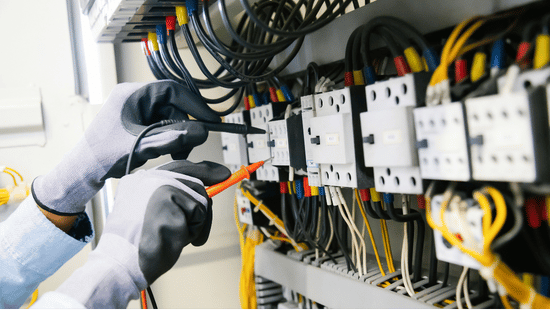
Properties and Overview of EPDM (Ethylene Propylene Diene Monomer)
Overview:
 EPDM (Ethylene Propylene Diene Monomer) is a synthetic rubber widely recognized for its excellent resistance to weathering, ozone, and aging. This elastomer is a staple material in industries requiring long-lasting, flexible solutions for harsh environmental conditions. EPDM's exceptional durability and heat, cold, and moisture resistance make it a versatile choice for various applications.
EPDM (Ethylene Propylene Diene Monomer) is a synthetic rubber widely recognized for its excellent resistance to weathering, ozone, and aging. This elastomer is a staple material in industries requiring long-lasting, flexible solutions for harsh environmental conditions. EPDM's exceptional durability and heat, cold, and moisture resistance make it a versatile choice for various applications.
Production:
The production of EPDM begins with the polymerization of ethylene and propylene monomers, along with a small proportion of a diene monomer that introduces unsaturation into the polymer chain. This controlled unsaturation allows for efficient vulcanization, enhancing the material's strength, elasticity, and thermal resistance. The resulting rubber can be customized with additives to meet specific performance requirements, such as increased UV resistance or improved mechanical properties. EPDM is typically vulcanized using sulfur or peroxide to achieve the desired elasticity and durability for industrial use.
Applications:
EPDM is widely used across numerous industries due to its outstanding properties. In the construction sector, it is a key material for roofing membranes, seals, and gaskets, where its ability to withstand UV exposure, temperature extremes, and moisture ensures longevity. The automotive industry relies on EPDM for weatherstripping, hoses, and belts, where its resistance to heat and flexibility at low temperatures are critical. EPDM is used for insulation and cable jackets in the electrical sector, taking advantage of its dielectric properties and resistance to environmental degradation. Additionally, EPDM is commonly found in HVAC systems, where it serves as a durable sealing material for ducts and pipes. Its use extends to playground surfaces, pond liners, and industrial hoses, showcasing its adaptability across diverse applications.
Summary:
EPDM is a robust and versatile elastomer that has become a material of choice for applications demanding durability and resistance to environmental stressors. Its unique combination of flexibility, resilience, and resistance to weathering ensures its continued relevance across industries. As innovation advances, EPDM remains critical for addressing modern engineering challenges and environmental considerations.
See a comprehensive list of electrical, mechanical, physical and thermal properties for EPDM (Ethylene Propylene Diene Monomer) below:
Electrical Properties of EPDM (Ethylene Propylene Diene Monomer)
Unfamiliar with a property? Click it's description to be given a full definition in the GLOSSARY
See properties and overview for
ALLOYS and CHEMICAL ELEMENTS
popular in engineering
Require different units not displayed?
CONVERT VARIOUS UNITS HERE
Mechanical Properties of EPDM (Ethylene Propylene Diene Monomer)
Unfamiliar with a property? Click it's description to be given a full definition in the GLOSSARY
See properties and overview for
ALLOYS and CHEMICAL ELEMENTS
popular in engineering
Require different units not displayed?
CONVERT VARIOUS UNITS HERE
Physical Properties of EPDM (Ethylene Propylene Diene Monomer)
Unfamiliar with a property? Click it's description to be given a full definition in the GLOSSARY
See properties and overview for
ALLOYS and CHEMICAL ELEMENTS
popular in engineering
Require different units not displayed?
CONVERT VARIOUS UNITS HERE
Thermal Properties of EPDM (Ethylene Propylene Diene Monomer)
Unfamiliar with a property? Click it's description to be given a full definition in the GLOSSARY
See properties and overview for
ALLOYS and CHEMICAL ELEMENTS
popular in engineering
Require different units not displayed?
CONVERT VARIOUS UNITS HERE
 ADDED TO MY FAVORITES!
ADDED TO MY FAVORITES! REMOVED FROM MY FAVORITES!
REMOVED FROM MY FAVORITES!